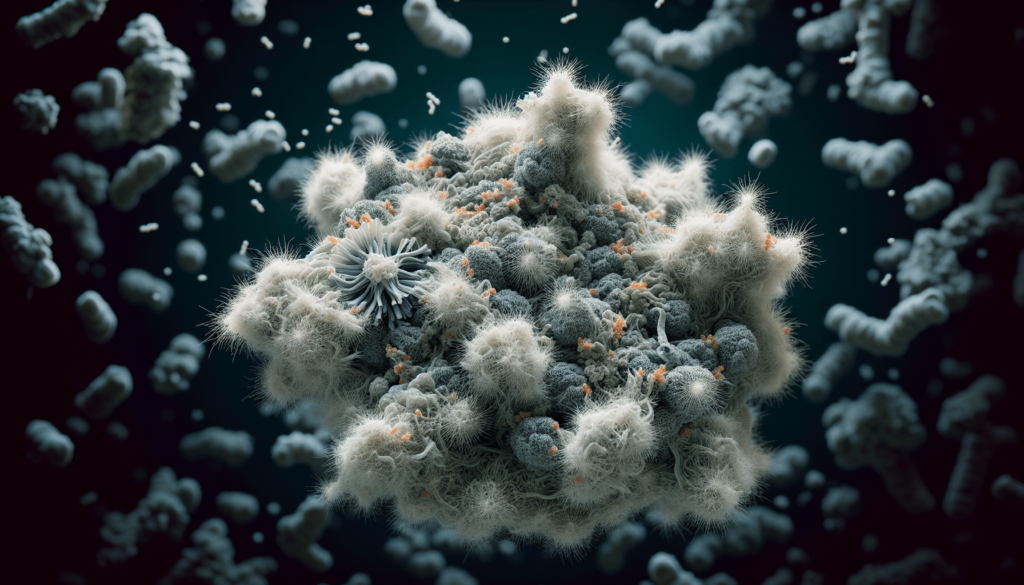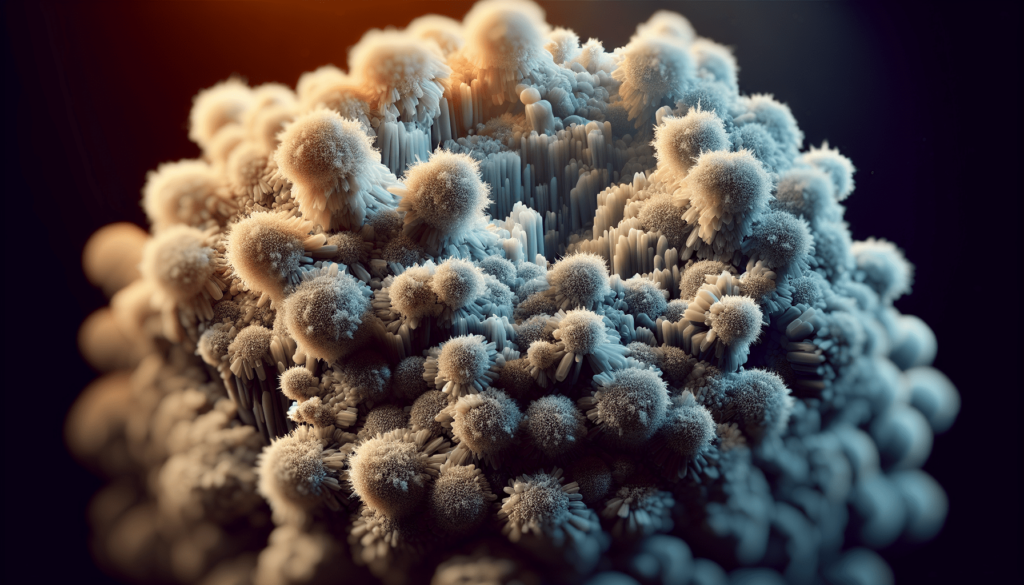Have you ever wondered why wastewater treatment processes seem to give so much attention to activated sludge? This is a key topic that often goes unnoticed unless you’re deeply involved in the wastewater treatment industry. Today, we’re going to chat about something specific within that realm: the floc structure in activated sludge. Don’t worry if you’re not familiar with all the technical jargon; we’ll break it down in a straightforward manner.

Understanding Activated Sludge Floc Structure
To get into the nitty-gritty of why this is important, let’s start by understanding what activated sludge floc structure is. In simple terms, it’s a bit like how galaxies form clusters of stars. These flocs are clusters or aggregates of microorganisms that function as the backbone of the activated-sludge process. The structure and effectiveness of these flocs can significantly impact how efficiently the wastewater is treated.
The Formation of Flocs
Flocs aren’t just randomly formed; they’re created through a complex interaction of bacteria, protozoa, and other microscopic organisms. It’s almost like a dance where these organisms come together to form flocs, binding with organic and inorganic materials. The quality of these flocs can make or break the efficiency of wastewater treatment.
Why Structure Matters
You might wonder why the structure is given so much emphasis. The answer lies in the floc’s ability to settle and separate from the treated water. A well-formed floc will settle more quickly and efficiently, ensuring that the treatment plant operates smoothly. If the structure is poor, it can lead to issues like poor settling, poor effluent quality, and even operational failures.
Components of Activated Sludge Floc
Let’s delve deeper into what composes these flocs.
Microbes and Their Role
Bacteria are the primary builders, with the capability to break down complex organic materials and convert them into simpler compounds. Other microbes, such as protozoa and fungi, also play essential roles. Protozoa help by eating bacteria and other particulates, keeping the system balanced.
Extracellular Polymeric Substances (EPS)
Extracellular Polymeric Substances (EPS) are like the glue that holds these flocs together. They are crucial in maintaining the structural integrity of flocs. Made up of proteins, carbohydrates, and nucleic acids, EPS help provide a stable and resilient environment for the floc’s microbes.
The Impact of Floc Structure on Treatment Efficiency
Now that you know what flocs are and what they’re made of, let’s explore how their structure influences treatment processes.
Settling Time
One critical factor is how fast these flocs settle. A compact and dense floc tends to settle quickly, leading to efficient solid-liquid separation. On the other hand, loosely bound flocs can lead to problems like sludge bulking and floating, hampering the overall treatment efficiency.
Nutrient Removal
A well-structured floc also enhances nutrient removal from wastewater, especially nitrogen and phosphorus. These nutrients need to be removed effectively to prevent pollution in water bodies where the treated water is disposed of.
Challenges in Maintaining Ideal Floc Structure
Maintaining the ideal floc structure isn’t devoid of challenges. Various factors can affect it, and as someone involved in this field, it’s good to be aware of these challenges.
Organic Load and Its Fluctuations
Fluctuations in the organic load can lead to changes in floc structure. For instance, an excess organic load can cause floc disintegration, while a low organic load might not provide enough “food” for microbes to create robust flocs.
Impact of Toxic Substances
Toxic substances can wreak havoc on floc structure. These substances can kill essential bacteria, leading to a collapse of the floc structure and inefficiencies in the treatment process.
Environmental Factors
Temperature and pH are two environmental factors that can influence floc formation. Typically, a conducive environment promotes healthy floc growth, but any significant changes can disrupt this balance.

Strategies for Optimizing Floc Structure
Given these challenges, how can you ensure that the floc structure is optimized for maximum efficiency?
Regular Monitoring and Adjustments
Monitoring the conditions within your system is crucial. Keep an eye on parameters like organic load, pH levels, and temperature. If you notice deviations that could impact the floc structure, timely adjustments can mitigate negative effects.
Introduction of Bioaugmentation
Bioaugmentation involves introducing specialized bacteria to enhance floc formation and performance. This strategy can be particularly useful if your system faces challenges like high organic loads or toxic substances.
Implementing Advanced Treatment Processes
Advanced processes, like coagulation and flocculation, can be used to improve floc structure. These processes help by enhancing the binding of particles, leading to a more cohesive floc formation.
Real-world Applications and Case Studies
Understanding academic concepts is valuable, but seeing them applied in real-world scenarios can often provide a more comprehensive insight. Let’s explore some real-life applications.
Municipal Wastewater Treatment Plants
Most municipal plants rely heavily on activated sludge systems. In these setups, maintaining an efficient floc structure ensures that the effluent discharged into natural bodies of water meets regulatory standards.
Industrial Effluent Treatment
Industries producing high-strength waste, such as the food and beverage sector, often face challenges with organic load fluctuations. Here, maintaining an optimal floc structure is vital for effective treatment and compliance with discharge regulations.
Future Directions and Innovations
The field isn’t just standing still. Innovations and future directions indicate that there’s considerable advancement on the horizon for improving floc structures.
Use of Genetic Engineering
Imagine being able to genetically engineer bacteria to form superior flocs. Research is ongoing in this area, and while it’s still in the experimental stage, the outcomes could revolutionize how activated sludge systems operate.
AI and Machine Learning
Artificial Intelligence (AI) and Machine Learning (ML) are starting to play a role in predicting and optimizing floc formation. With these tools, the possibilities for enhancing treatment processes are endless, as they can predict system behavior under various conditions.
Recap: The Significance of Floc Structure
As we’ve journeyed through the intricacies of activated sludge floc structure, it’s clear that the significance of maintaining an optimal structure cannot be overstated. Whether it’s improving the settling time, enhancing nutrient removal, or dealing with the adverse impacts of toxic substances, the floc structure lives at the heart of effective wastewater treatment.
Q&A: Common Questions on Floc Structure
To wrap things up, let’s address some common questions you might have regarding floc structures.
What should I do if I observe poor floc formation?
Begin by checking key parameters like organic loads and toxic substances that might be affecting the floc structure. Adjusting these factors often helps improve floc formation.
How do environmental changes impact floc structure?
Drastic changes in temperature or pH can disrupt the microbial activity essential for floc formation. It’s crucial to maintain stable environmental conditions to support optimal floc growth.
Are there any quick fixes for immediate issues?
For immediate issues, consider employing bioaugmentation or chemical treatments like coagulation. Although these aren’t permanent solutions, they can help stabilize the situation temporarily.
As you navigate through the complexities of wastewater treatment, understanding the importance of activated sludge floc structure is pivotal. The more you grasp these concepts, the better equipped you are to manage and optimize treatment processes successfully. So, the next time you think of flocs, you’ll appreciate the unassuming yet vital role they play in making our water cleaner and safer.
